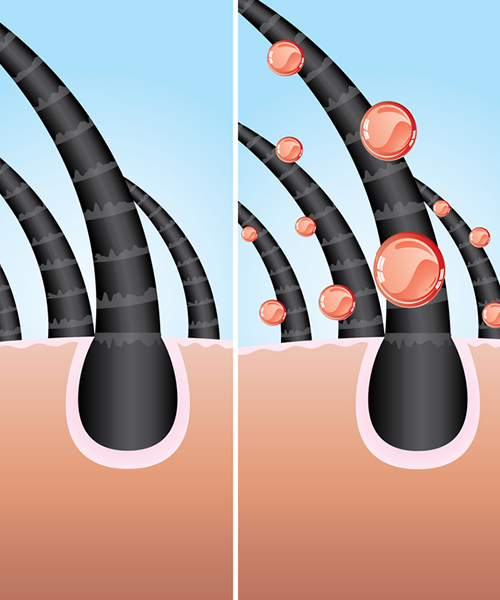OxyCure is an emerging treatment designed exclusively to be a supplementary treatment to hair transplants. The objective of the procedure is to fill the gaps that the intrinsic process of hair transplantation often leave behind, to achieve the picture of perfection and peak unprecedented thresholds of success.
OxyCure procedure
OxyCure is an outpatient procedure where patients are administered to 100% pure oxygen in pressure-controlled chambers. The controlled factors prompt the body to enhance multiple metabolic functions around the body, all of which have a significant impact on the results of hair transplants.
The hyperbaric pressure conditions allow the lungs to absorb more oxygen than is otherwise possible under normal conditions. In addition, oxygen diffusion from red blood cells to plasma is dramatically facilitated under the mentioned conditions, where the oxygen concentration skyrockets from 2-5% to an average of 70%. In other words, the treatment enriches body cells with oxygen, which in turn, stimulates molecular function that favors the proliferation and survival of grafts.

Where hair transplants fall short
To date, hair transplants are the single effective treatment in reversing multiple permanent classes and categories of hair loss and alopecia. However, as is the case with science and medicine in general, progress is necessary to nudge the potential of the treatment forward.
Typically, hair transplants, operate through the translocation of healthy follicular units to areas of the balding scalp. While the process of hair transplantation does not pose irreversible trauma to the grafts, it has adverse effects to an extent. Through cutting the primary source of blood supply in the original region, grafts are placed in an entirely unfamiliar location and the adaptation process, although an inherent part of the event, can at times be harmful to select grafts.
The period of time it typically takes grafts to reconnect to a consistent source of blood supply is around three days, and the process is referred to as revascularization. Preceding revascularization, grafts rely entirely on plasma to receive their oxygen requirements to presume necessary cellular activity. Owing to the significantly trivial concentrations of oxygen present in plasma, it is predictable that survival is not guaranteed for all grafts. An average of 70% of grafts is estimated to survive until revascularization is obtained.
As is clear by now, plasma is the prime oxygen delivery medium for follicular units during the first three days post-surgery. Therefore, the concentrations of oxygen carried in plasma are necessary for survival rates of follicular units and by extension, the results of the procedure and hair density.
The effects of the treatment are relatively widespread, influencing all cellular activity that relies on oxygen. So aside from increasing survival rates of follicular units, the treatment has monumental consequences on a versatile range of aspects of the surgery.



